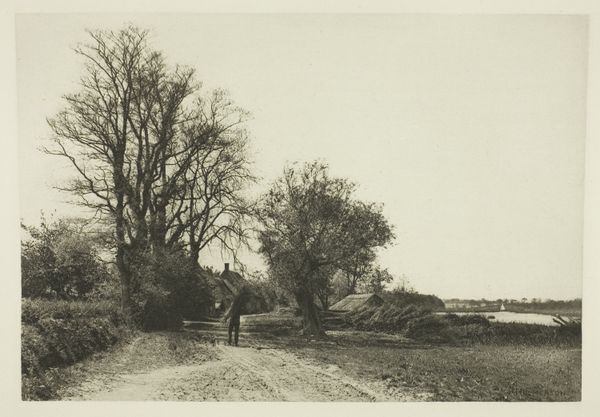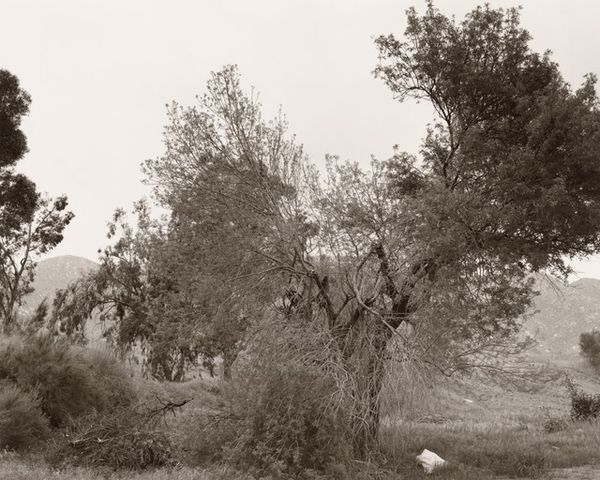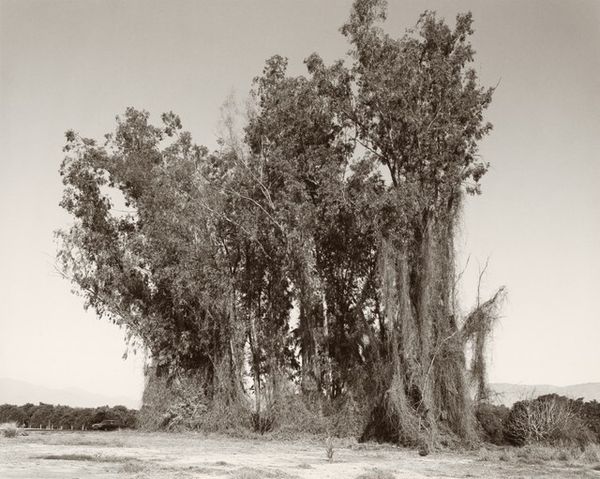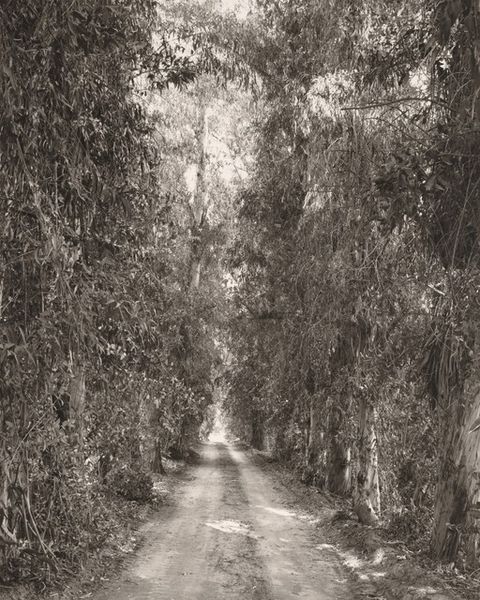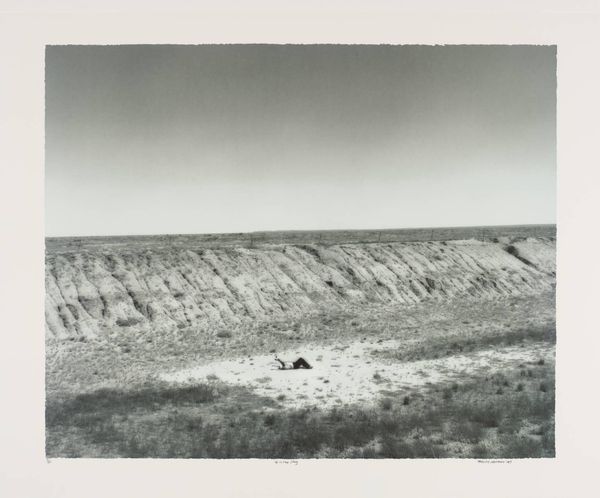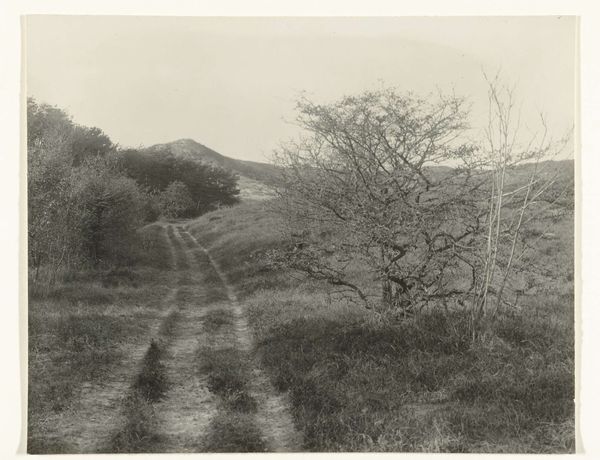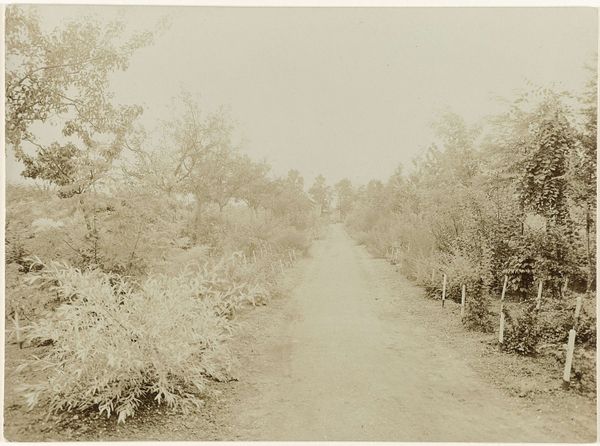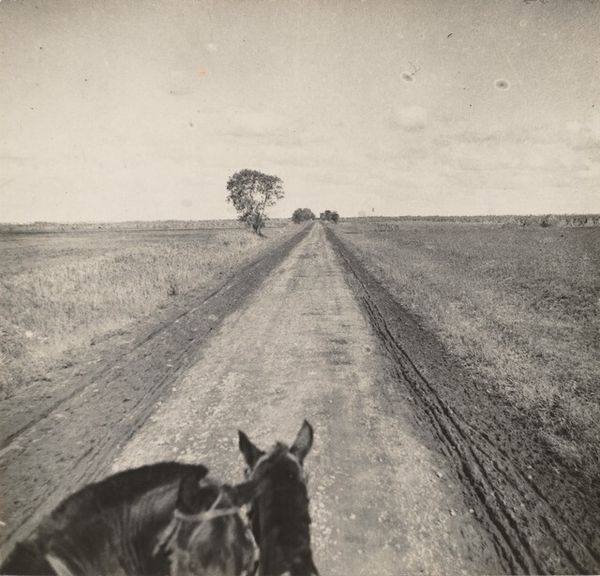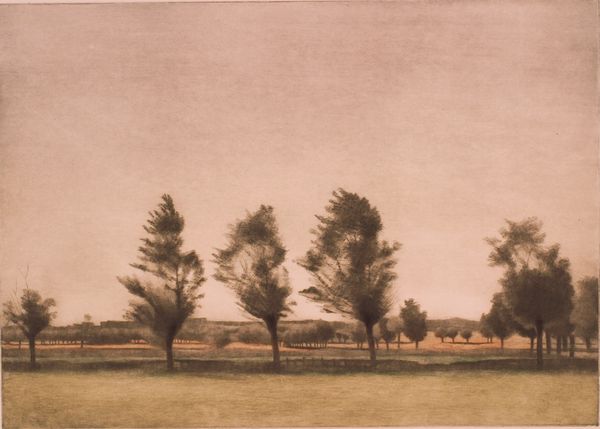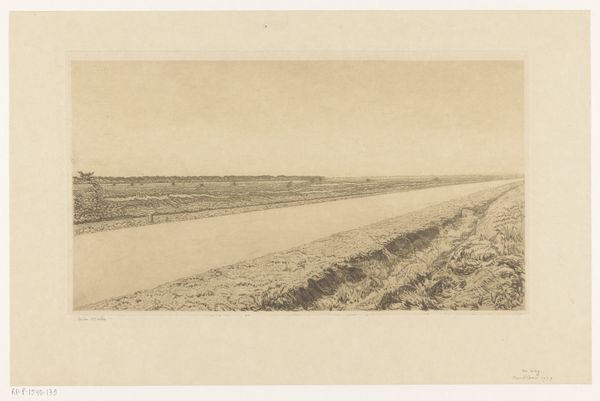
Abandoned windbreak, west of Fontana, California Possibly 1983 - 1998
0:00
0:00
photography, gelatin-silver-print
#
black and white photography
#
countryside
#
postmodernism
#
landscape
#
street-photography
#
photography
#
gelatin-silver-print
#
monochrome photography
#
monochrome
#
skyscape
#
realism
#
monochrome
Dimensions: image: 22.8 × 28.5 cm (9 × 11 1/4 in.) sheet: 27.9 × 35.3 cm (11 × 13 7/8 in.)
Copyright: National Gallery of Art: CC0 1.0
Editor: So, here we have Robert Adams's "Abandoned windbreak, west of Fontana, California," a gelatin-silver print, likely from somewhere between 1983 and 1998. I find the scene very bleak. It's just this dirt road fading into the distance with a line of trees… and this random tire. How do you interpret this work? Curator: That starkness, the abandoned tire, the desolate road...it all speaks to a disruption of our idealized visions of the landscape, especially the American West. Think about how the windbreak itself, meant to offer protection and order, has been left to stand alone, almost aimless. What cultural narratives are wrapped up in those failing symbols of protection and promise? Editor: Failing symbols? What do you mean? Curator: Well, doesn't the presence of that discarded tire jar you? It's such a mundane object against the backdrop of nature. It symbolizes human impact, disruption. Consider the black and white medium; it strips away the vibrant life that might be there and presents instead a stark reality of human alteration and neglect. Editor: That makes sense. The monochrome really does emphasize that sense of…disillusionment. Are you saying it's meant to represent our detachment from the environment? Curator: Detachment, certainly, but also a commentary on the futility of controlling nature. That windbreak, the tire... they all point towards that failure. We continue to leave our mark, but ultimately nature reclaims its space. What emotional response does that inspire within you? Editor: I suppose a bit of sadness, maybe even guilt. It’s like a memento mori for a lost connection to the land. Curator: Precisely. It’s about recognizing the continuity of our relationship with our landscape—a relationship defined by persistent change and enduring symbols. Editor: I see it so differently now! It’s much more than just a bleak landscape. Curator: It invites contemplation, wouldn’t you say? Even through starkness, a photograph holds power.
Comments
No comments
Be the first to comment and join the conversation on the ultimate creative platform.
